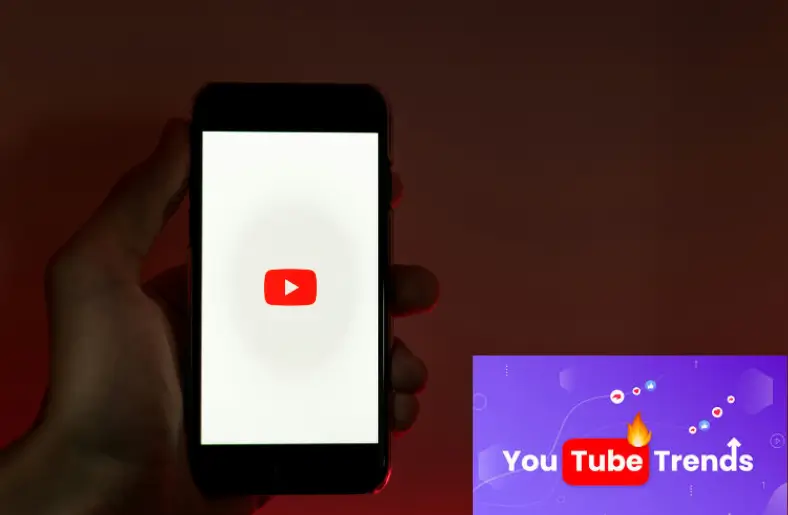YouTube advertisers promote brands on the platform. They pay to show ads to users. They want to reach people watching videos. YouTube advertisers are businesses. They pay to have their ads shown on YouTube videos. The ads can appear before, during, or after a video. They can target specific audiences based on demographics, interests, and watch history.
Standing out in a crowded marketplace is key for YouTube advertisers. Many channels and videos compete for attention. It’s crucial to understand how viewers watch. So, what streaming trend should YouTube advertisers be most aware of?
How we watch videos is always changing. YouTube advertisers need to adapt to keep up. Understanding these trends can help them reach their audience better. It can help them get a better return on their investment.
Key Points
- YouTube advertisers are businesses. They pay to have their commercials shown on YouTube videos.
- These advertisers’ biggest challenge is grabbing attention. They must do so amongst a vast amount of content.
- Staying informed about viewer habits is crucial for YouTube advertisers. This includes knowing the latest streaming trends. It helps them reach their target audience well.
Top YouTube Ad Tips
Online video is evolving. Keeping up with the latest YouTube Ad trends is important for advertisers. It helps them maximize their campaign efforts. This article will explore some top YouTube ad trends. They are emerging in 2024. All platform advertisers should be aware of them.
Short-Form YouTube Ads
One trend gaining significant momentum is the rise of short-form ads on YouTube. With attention spans shrinking, many viewers prefer brief yet impactful YouTube Ad formats. This has led to the growth of styles like bumper ads, connected TV skin ads, and mobile pre-roll ads in under 5 seconds.
Creating concise YouTube Ads is hard. They must engage audiences in a short time. This needs a laser focus on key value propositions. Brands must distill messaging to highlight top benefits in an instant. Creative elements like visual demonstrations or humor often work well.
YouTube itself continues expanding its short video offerings to tap into this trend. Options such as YouTube Shorts provide new avenues for snackable ad placements. Staying up to date on small ad innovations will help maximize impressions. These are among growing viewer groups.
TrueView for Action Ads
YouTube’s TrueView for Action ad format has promise. It drives real-world actions from campaigns. These TrueView for Action Ads let brands set specific calls to action. For example, they can say “Visit our website” or “Download our app.” Brands only pay when users do the action.
In the coming year, more advertisers will test TrueView for Action Ads. They will do so across key product lines and services. Analytics are improving. Improving these ads may involve better targeting, creativity, and incentives. Leveraging user data for high-performance TrueView optimizations can strengthen ROI.
Emerging Ad Platforms
New platforms are introducing alternative approaches for in-stream video ads. Examples include TikTok. They also include Facebook’s in-stream click-to-message ads. And, Snapchat’s unskippable videos, and Pinterest Idea Pins. While still small compared to YouTube, these up-and-comers are worth monitoring.
Some lessons from early experiments on emerging platforms may transfer back to YouTube. These ideas involve creative tactics. They generate viral videos or social content that bonds with e-commerce. YouTube marketers can consider using them. Staying informed of new videos helps with testing and measuring on YouTube. These videos are on all platforms.
Conclusion
The online video landscape is changing fast. YouTube advertisers must stay aware of the top trends of 2024. One key streaming trend is the growth of short-form content on platforms. YouTube advertisers should be most aware of this trend. Viewers have shortened attention spans and are engaging more with quick videos. Advertisers need to learn how to promote their brands. They must do so within these shorter timeframes.
To keep succeeding on YouTube, advertisers must follow the changing online video world. Adapting strategies and campaigns based on trends will help advertisers. These trends are like those discussed in this article. They will help optimize ad spending. Those who watch the top YouTube Ad trends for 2024 will be ready to engage audiences now and in the future.
FAQ
Attention spans have been shrinking. This has happened in recent years due to new platforms and formats. YouTube itself has adapted by launching new short-form options like YouTube Shorts. Advertisers need to keep up with these fast changes. They must test new ad styles and lengths.
Brands like Chipotle, Starbucks, and Amazon have found success. They promote their brands and products through quick teaser ads in under 15 seconds. Visual demonstrations highlighting a single benefit seem to engage well. Humor can also work if crafted for bite-sized consumption. Testing is key to seeing what resonates best for different target audiences.
Partnerships should weave brands into influencer content over many videos. They should do this instead of doing one-off endorsements. This allows deeper storytelling beyond logos. Collaborations are where influencers review new product lines or sponsor video series. These extend brand messages. They are more authentic and impactful ways to use influencer marketing.
TikTok is still small compared to YouTube. But, it and similar platforms represent valuable opportunities. Some ad styles proving successful elsewhere may transfer learning back to YouTube campaigns. It’s also useful for advertisers to stay informed of new tactics. These tactics use social sharing, e-commerce, or video formats. Advertisers can use the tactics to adapt. Testing early provides advantages.
Leveraging massive audience insights is critical for maximizing every advertising dollar spent. YouTube’s targeting abilities now far surpass simple contextual targeting alone. You can drill down ads by attributes, interests, and behaviors using powerful data. This means the right messages reach the exact people most likely to engage. This strategic precision optimizes advertiser returns.
